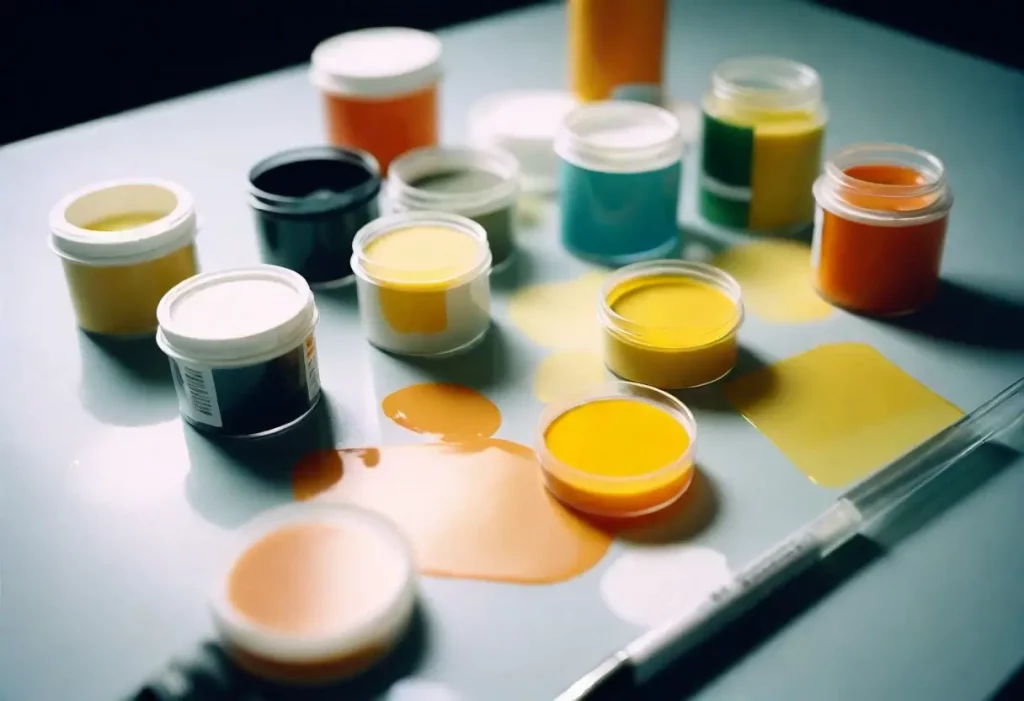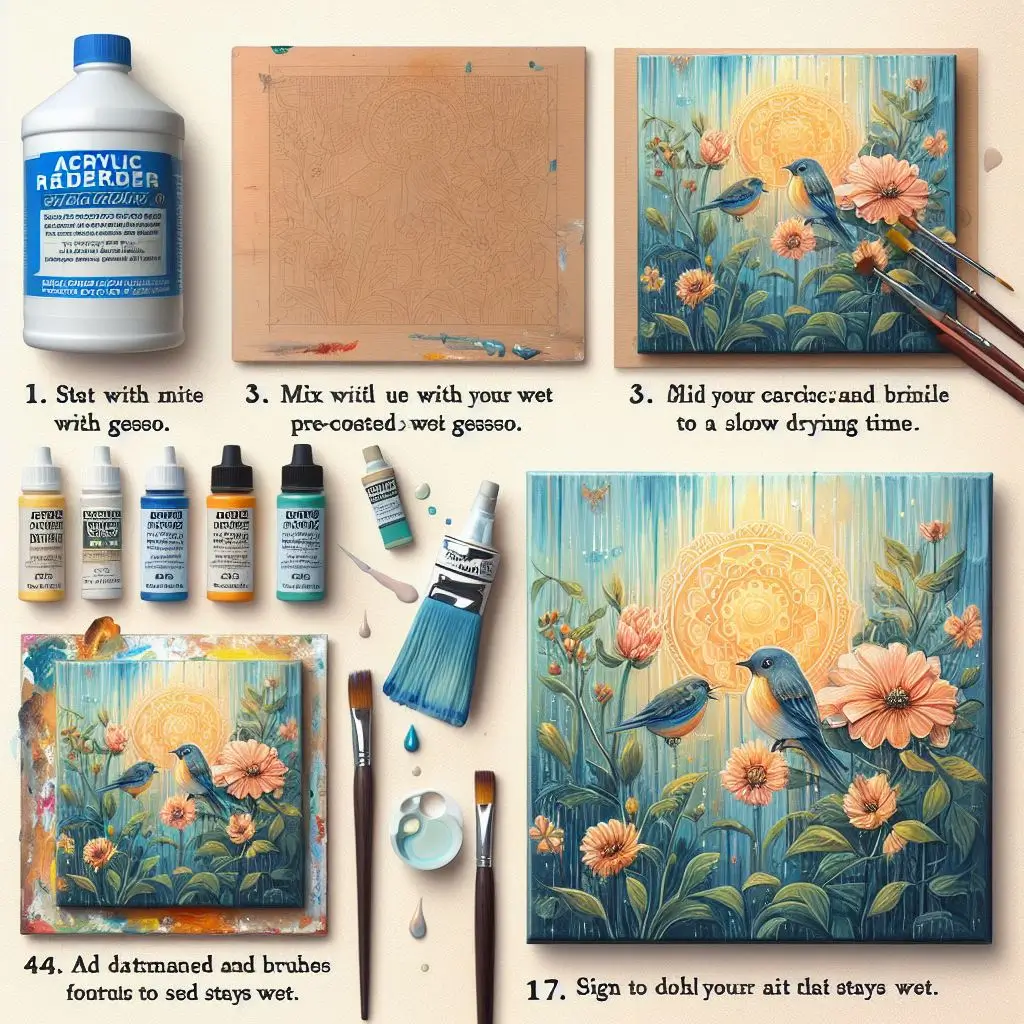
Guide on How to Use Acrylic Retarder
The versatility, vivid colors, and short drying time of acrylic paint have made it very popular among artists. However, the quick-drying nature of acrylic paints causes challenges when working on large-scale projects or trying to achieve subtle blending and transitioning. Painters face a challenge when using water alone because it can dilute color concentration.
This is where acrylic retarder comes into play for painters, providing better functionality and smooth blending. This post includes a detailed guide on how to use acrylic retarders to enhance your acrylic painting experience.
Understanding Acrylic Retarder

Acrylic retarder is an additive that slows the drying period of acrylic paints. It contains substances that prevent water from evaporating from the paint. Therefore, it helps to increase the open or working time. This prolonged working period helps artists who need more time to blend colors, develop gradients, or work on complex details without fear of the paint drying quickly.
Why Should You Use a Drying Retarder?
Propylene glycol is a glycerin-based substance used in drying retarders. In truth, painters have been using a glycerin and water mixture for centuries to prolong their painting time and make painting details and blending easier.
It functions by slowing down the rate at which water molecules evaporate.
Good to Know
However, binders—substances to which the color pigment can adhere—are absent from the acrylic retarders. For instance, wax serves as the pigment’s binding agent in a crayon.
Acrylic paint contains acrylic resins, which are a type of vinyl. The acrylic acid molecule polymerizes to produce a variety of plastics.
When these substances mix with water, a polymer dispersion is formed. This is what holds the color pigment together.
When you apply too much Retarder or don’t have any binders like this, the color pigment won’t have anything to adhere to. It might prevent drying paint correctly, making your painting somewhat tacky, and possibly leading to more problems in the future.
How to Use Acrylic Retarders Successfully
If you adhere to the suggested ratio of Retarder to Acrylic paint, you can be certain that the Retarder won’t cause any issues. To your palette, add 5% retarder. It comes as a few little drops in terms of practical use. Learning how much to mix without going overboard can help you get the right consistency and longer paint life. Being overly cautious is the best approach.
Some manufacturers recommend that the addition of their retarders should not exceed a 14% (1:6) ratio. Again, that’s a bit hard to understand with paint in your palette, so try adding a couple of tiny drops and see what happens. The most important thing to remember is not to go overboard.
Is It Possible to Just Use Water?
If the paint seems a little sticky, you may just use water on smaller areas. It comes in handy if you aren’t comfortable using a drying retarder. As you work, give your brush special care regularly. In other words, you must regularly thoroughly rinse the paint to prevent it from hardening within the fibers.
It’s easy to give in to the urge to keep going and mix colors with your brush. However, this will soon cause the new and old paint to combine on your canvas, and the brush head will start to dry. This is especially true during the middle of winter when the fire is burning or the air conditioning system is heating the air, or during hot, dry weather.
Keeping a fresh brush on hand and discarding the used one in the clean-up water to be handled later can help you minimize the amount of time needed for this process. You don’t have to wait for a new color change to achieve this.
Tips for Using Acrylic Retarder Effectively
1. Add the retarder gradually: Start with a small amount of retarder. Gradually increase the ratio as needed. If you add too much retarder at first, it’s more difficult to remove its effects than lowering the drying time.
2. Mixing Consistency: Make sure the paint and acrylic retarder are thoroughly mixed to get a uniform texture and drying time across your color scheme. Poor mixing might lead to uneven drying rates, lowering the overall quality of your painting.
3. Test on Different Surfaces: Try using acrylic retarders on various surfaces and textures. It will help you better understand what is acrylic retarder medium, how it works with the paint, and how it affects drying times. Assess versatility and adaptability by testing the retarder on rough, smooth, absorbent, and non-absorbent surfaces.
4. Adapt to Ambient Conditions: Assess the ambient temperature and humidity levels in the workspace, since they might affect the drying time of acrylic paint. Adjust the amount of retarder as needed to ensure consistent working duration, especially under changing conditions.
5. Layering Techniques: When applying many coats of paint, use an acrylic retarder carefully. To avoid early drying and increase adhesion, use a thin coat of retarder in between paint applications. It will make multi-layered artworks have more depth and smoother transitions.
6. Upkeep and Cleaning: After every painting session, quickly clean your brushes and palette to keep acrylic paint and retarder from drying and solidifying on the tools. To clean brushes, use water and a mild soap solution. Scrape off extra paint from the palette before it dries.
The Bottom Line
By the end of the day, it’s a personal choice; you don’t have to use acrylic retarders, but you might find that they improve your painting experience. Painting with acrylics requires a lot of time. That’s why some individuals prefer painting with oils.
But acrylic retarder is a valuable tool for artists looking for more freedom and control over their acrylic painting process. You can become an expert at utilizing a retarder to improve the quality of your acrylic paintings by learning how it works and adhering to the abovementioned guide on how to use acrylic retarders. Acrylic retarder can help you explore new artistic possibilities by allowing you to practice, experiment, and let your creativity run wild.





